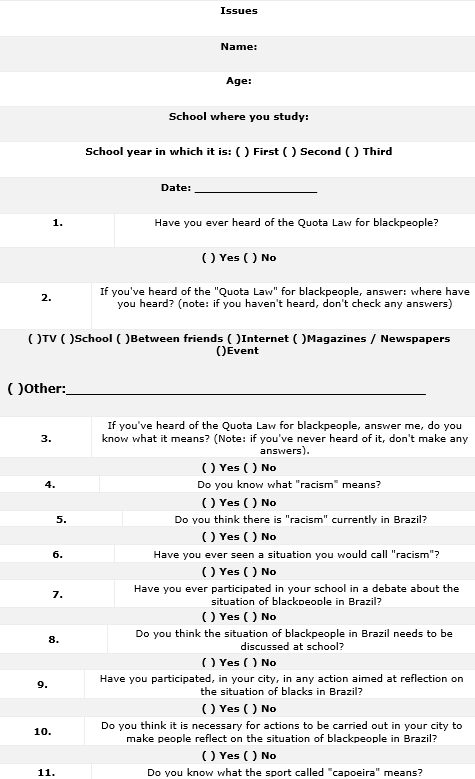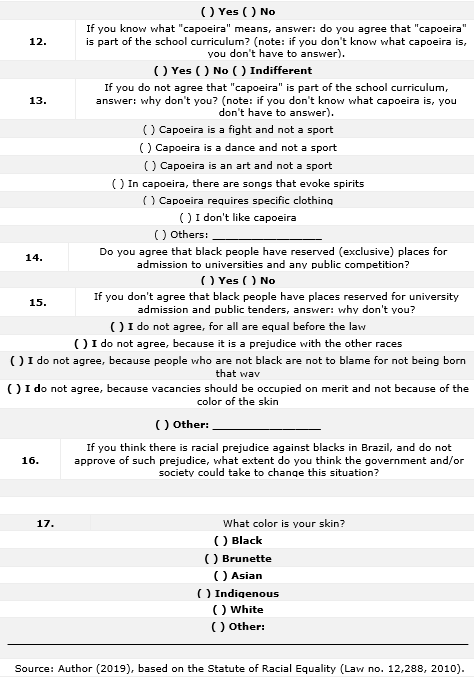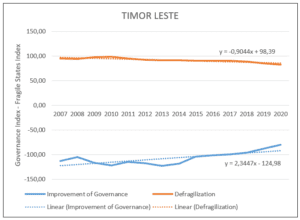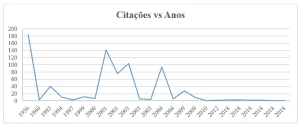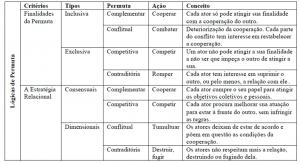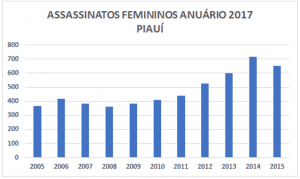ORIGINAL ARTICLE
NASCIMENTO, Marcelo Victor Rodrigues do [1]
NASCIMENTO, Marcelo Victor Rodrigues do. Politics of racial quotas and high school students of public schools in the region of Itapetininga. Revista Científica Multidisciplinar Núcleo do Conhecimento. Year 05, Ed. 01, Vol. 08, pp. 49-73. January 2020. ISSN: 2448-0959, Access link: https://www.nucleodoconhecimento.com.br/social-sciences/quota-policy
SUMMARY
This study aimed to verify the degree of science of high school students in the region of Itapetininga, regarding the quota policy undertaken by the Federal Government, their opinions about racism and whether they have participated in debates and other “affirmative actions” both in school and in the municipality, which allow them to reflect on racial issues involving Afro-descendants. For this purpose, 192 public high school students who study in the area of the Board of Education – Itapetininga Region, of the São Paulo State Department of Education, were interviewed. In the interview, the students’ science about the existence of the “quota law” was addressed; (2) racism in Brazil; (3) the realization of debates and actions related to blacks in the school and in the municipality they live; (4) capoeira sport and the school curriculum; (5) the reserve of vacancies for blacks in universities and public tenders, and (6) the number of Afro-descendants in schools in the region. The percentages obtained indicated that (1) most students have never heard of the Quota Law, (2) everyone knows what racism means and most have witnessed situations that classify as such, (3) the vast majority understand that education is the way to eradicate racism, but few participated in cultural and educational affirmative actions in school and municipality , (4) all students know capoeira, but not all want it in the school curriculum, (5) more than half of the interviewees are against the reserve of vacancies for Afro-descendants in university and public tenders and (6) the majority declared themselves white, although the research points to the prevalence of mixed race in Brazil. It is concluded that the deficiency of the action of the public authorities and public educational institutions in the studied region is one of the major causes of inefficiency in combating racial prejudice in Brazil, a fact that, in addition to hindering the development of critical sense by high school students, contributes to perpetuate the highly racist models of the past, which condemned thousands of people to live in marginality.
Keywords: racism, quota law, vacancies, higher education, capoeira.
1. INTRODUCTION
In search of the payment of an alleged debt to the black and indigenous race and for the promotion of racial equality in Brazil, on August 29, 2012, Law 12,711 was passed, popularly known as the “Quota Law” which provides for the entry of self-declared blacks, browns and indigenous people and people with physical disabilities in federal universities and federal institutions of secondary technical education (Law no. 12,711 , 2012).
This law, however, only ratified what had occurred in Brazilian universities since 2003, when the State University of Rio de Janeiro (UERJ) began a “quota program”, which extended to other universities, reaching 14 (fourteen) universities in 2005, 43 (forty-three) in 2006 and 83 (eighty-three) in 2010 (Guarnieri and Melo-Silva , 2017).
Therefore, it is possible to insate that, despite all the controversy that exists about racial quotas, the quota program in Brazil was implemented even before it became a federal law, being, therefore, an indicator that that program, started in 2003 at UERJ, was a success, even though it was not a consensus (Guarnieri et al, 2017).
Since that time, several “affirmative actions” (programs and special measures aimed at correcting racial inequalities and promoting equal opportunities) have been carried out in Brazil, in order to comply with the determinations contained in the legislation in force and achieve the proposed objectives (Ferreira and Mattos, 2007).
In 2008, a law was passed determining that, in public and private elementary and high school schools, the study of Afro-Brazilian and indigenous history and culture would be mandatory (Law No. 11,645, 2008).
Two years later, in 2010, the Federal Government instituted the National System for the Promotion of Racial Equality (Sinapir), defining, among other things, that educational campaigns would be developed, including in schools, so that solidarity with members of the black population would be part of the culture of society as a whole. In addition, “capoeira” would become a sport of national creation under Article 217 of the Federal Constitution, being provided its teaching in public and private institutions, by capoeiristas and traditional masters, public and formally recognized (Law no. 12,288, 2010).
Four years later, the Federal Government determined that 20% (twenty percent) of the vacancies offered in public tenders, in order to provide the effective positions and public jobs, within the scope of the federal public administration, municipalities, public foundations, public companies and mixed economy societies controlled by the Union, would be destined to the self-declared black or brown, according to the classification of color or race defined by the Brazilian Institute of Geography and Statistics Foundation (Law No. 12,990 , 2014).
However, although salutary from the point of view of “affirmative actions”, such changes, according to Ferreira et al (2007), ended up touching un passant in a much deeper aspect: the identity of the Afro-descendant, constructed (as in the case of any person) from their living conditions, both with regard to the image of himself and the image established by society for such a group of people.
These authors suggest that, for an effective change, “impact situations” are necessary that deny cultural identities, generating moments of crisis, in order to impel both blacks and whites to rethink their values and change their conceptions and subjectivities (Ferreira et al., 2007).
The debates seem to be good crisis situations, where those involved are urged to penetrate the core of the issues, reorganizing their ideas and reviewing their concepts. For blacks, in particular, they seem to be good opportunities to break with the idea that differences are natural and to reflect on who their ancestors were, what their current conditions are and what they want for the days to come, both for themselves and for their descendants (Ferreira et al., 2007).
The school is undoubtedly the most appropriate space to promote debates about issues of national interest, such as racism, for example, because, in addition to the natural curiosity of youth, after family life, it is the social group where children and young people have contact with the “different”, that is, with people of different religions, social standards, color, culture, etc. (Silva and Ferreira , 2014).
According to the Law of Guidelines and Bases of Education (LDB), it is in high school that students should be encouraged to develop critical thinking and prepare for the exercise of citizenship, making this phase (of human development) the most conducive to discussions on controversial topics, such as the Quota Law for example (Law No. 9,394, 1996). In addition, high school students are at the door of higher education, being directly impacted by this affirmative action of the Federal Government.
From this perspective, this scientific research aims to verify the degree of science of high school students in the region of Itapetininga – SP regarding the quota policy undertaken by the Federal Government, their opinions about racism and whether they have participated in debates and other “affirmative actions”, both at school and in the municipality, which allow them to reflect on racial issues involving Afro-descendants.
2. METHODOLOGY
According to the definitions of Cervo and Bervian (1983), this research can be classified as a descriptive and cross-sectional study, aimed at observing, recording, analyzing and correlating phenomena (variables), without handling them, which occurred at a given time with a specific audience.
The collection instrument was a questionnaire elaborated by the author (Appendix A), containing 1(one) open question, 3 (three) mixed questions, 13 (thirteen) closed questions, of which 2 (two) are multiple choice and 11 (eleven) are dichotomous type, that is, that verifies the agreement or disagreement of the interviewee about a certain favorable or unfavorable statement in relation to the research object (Vieira , 2010; Ribeiro et al. 2016).
The questions were based on the Statute of Racial Equality (Law no. 12,288, 2010) and addressed the following aspects of the law:
- Racism, as something that must be fought (Art. 1°);
- Debates about racial prejudice in educational institutions and society, as something that should be encouraged and sponsored by the public authorities (Art. 11°);
- Capoeira sport, of black matrix, as a good of immaterial nature and formation of Brazilian cultural identity (Art. 20°, 21° e 22°);
- Access of blacks to higher education, as an affirmative action aimed at promoting equal opportunity and social inclusion (Art. 56°).
Initially, the questionnaire investigated the knowledge and understanding of the interviewees about the research theme, the Quota Law, as well as the origin of such knowledge. Then, it was addressed to the theme racism, its understanding and concrete existence in the present day, based on the universe of students.
Next, the questionnaire addressed the issue of whether or not to conduct debates and actions aimed at combating racial prejudice, both at school and in the interviewee’s municipality. Then, he wondered about the knowledge or not of “capoeira”, a sport of African origin, and its acceptance as part of the school curriculum.
Later, the interviewee’s opinion was requested about actions that could be taken against racial prejudice and the questionnaire was finalized with two key subjects: the access of blacks to the public university through racial quotas and the classification that the interviewee himself makes of the color of his skin.
The quantification of the number of Afro-descendants among the students interviewed aimed to obtain a picture of the school reality of the investigated region, knowing beforehand that the level of education is something historically excluding in relation to blacks in Brazil (Chemim, 2013).
In the color relationship presented to the interviewees, in order for him to point out the color of his skin, the classification “brown” was purposely changed (classification officially defined by the Brazilian Institute of Geography and Statistics as an intermediary between white and black) by the classification “brunette”, because it is a more popular expression, thought psychologically as less aggressive and less polarized , making it more favorable to accept one’s own color as non-white (IBGE, 2008, p. 37, 65; Sansone, 2003, 75).
However, the questionnaire brought the option “other”, for cases in which the interviewee would choose, as color of his skin, the brown color itself, or other classification as “mulatto”, or “mixed race”, or “dark”, or “light brunette”, or “dark brunette”, or “redhead”, etc., very common classifications, according to other surveys of the genre (IBGE, 2008, p. 40; Sansone, 2003, p. 62).
2.1 SAMPLE
The sample analyzed in the investigation consisted of 192 high school students from state public schools, from the area of the Board of Education – Itapetininga Region, from the Department of Education of the State of São Paulo (Government of the State of São Paulo, 2019).
The people in the sample were randomly recruited, without specific criteria of gender, color, age, school year (1st, 2nd or3rd years of high school), religion or social condition, forming a simple random sample according to Vieira’s definition (2011). The students, after having become aware of the research, expressed interest in voluntarily participating in it.
As for the educational institutions of the interviewees, the researcher was prevented from conducting the research within the public schools in 2019, since the Regional Teaching Board of the Region of Itapetininga responded negatively (Appendix A) to a letter of request from the researcher (Appendix B), because of the “educational demands”. Therefore, the research was carried out directly with the students, outside the school environment.
2.2 PROCEDURES
The questionnaire was printed by the author of the research and presented particularly to the students, from October 1 to December 10, 2019, without the participation of state schools in the region of Itapetininga, who filled it individually, under self-administration and without the interference of the interviewer.
The data collected in closed and mixed questions form quantitatively treated, using graphs and statistical variables, such as “percentage”, “minimum value” and “maximum value” (Medeiros, 2007).
The open question, in turn, was analyzed qualitatively (content and semantics), considering the situation experienced by the interviewee, of a student of a public school in the interior of the state of São Paulo (Henkel, 2017; Martins, 2017).
3. DATA ANALYSIS AND DISCUSSION
The Quota Law, approved 7 years ago, has been one of the most effective instruments to expand the access of Afro-descendants (blacks and browns) to higher education in Brazil, according to statistics from the National Institute of Educational Studies and Research (INEP, 2018). However, not all high school students know it, even if they are the most interested in the subject, precisely because they are at the gates of higher education.
Table 1 shows that of the 192 interviewees, 44% had never heard of the Quota Law and, of those who heard about it (56%), 12.8% do not know what it means. In addition, among those who declared to know the Quota Law, 49% of them said they had become aware by means other than the school.
This reveals that the institutions directly involved in the process of creating a new identity for Afrodescendants in Brazil (the schools of the Itapetininga region), seem not to be attentive to their responsibilities and importance for the achievement of the public policies of the Federal Government, with a view to eradicating racial prejudice in Brazil.
Table 1. Percentages related to the knowledge of the Quota Law.
| Questions 1, 2 and 3 of the Appendix A questionnaire | |||
| 1. | Have you ever heard of the Quota Law for blackpeople? | ||
| 56% Yes | 44% No | ||
| 2. | If you’ve heard of the “Quota Law” for blackpeople, answer: where have you heard? (note: if you haven’t heard, don’t check any answers) | ||
| 13% TV
51% School 12% Among friends 16% Internet 5% Magazines/Newspapers 0% Event 3% Other |
|||
| 3. | If you’ve heard of the Quota Law for blackpeople, answer me, do you know what it means? (Note: if you’ve never heard of it, don’t make any answers). | ||
| 87.2% Yes | 12.8% No | ||
| Source: Author ‘s (2019), based on the Appendix A Questionnaire. | |||
It could be affirmed that one of the causes of misinformation is the fact that more than one third of Brazilian households do not have access to the Internet, especially social classes D and E, which provide the majority of students from public schools (Mello, 2018). However, due to the period of the enactment of this law (7 years) and the clarity of the legislation regarding the direct participation of the public authorities and educational institutions in this process, ignorance is unjustifiable, even more so if the fact that the research was carried out in the state of São Paulo, the most developed in the country, is considered.
The absence of racial tensions in Brazil, unlike the U.S., and the policy of racial cordiality initiated in the era of president Getúlio Vargas’ populist government strengthen the idea that Brazil is experiencing a racial democracy. However, the figures show exactly the opposite, that is, that such an idea is nothing more than an illusion (Sales Jr, 2006).
Table 2 reveals that: (1) all students interviewed know perfectly what racism means, (2) racial prejudice is something concrete in current Brazilian society, and (3) most have seen situations that classify as racist. This reality seems to contradict the discourse that ensures that most people are against racism and want it to be fought and eradicated (Nunes, 2010).
These are worrying numbers that deserve deep reflection on the part of Brazilians, especially the institutions directly involved with the moral, ethical, intellectual and social education of young Brazilians.
Table 2. Percentages relating to racism.
| Questions 4, 5 and 6 of the Appendix A Questionnaire | |||
| 4. | Do you know what “racism” means? | ||
| 100% Yes | 0% No | ||
| 5. | Do you think there is “racism” currently in Brazil? | ||
| 99.5% Yes | 0.5% No | ||
| 6. | Have you ever seen a situation you would call “racism”? | ||
| 78% Yes | 22% No | ||
| Source: Author ‘s (2019), based on the Appendix A Questionnaire. | |||
It is very likely that young students will not be able to distinguish the dimensions of racism (ideological, attitudes and structural), not identifying, therefore, that, in addition to the declared racism, there is still veiled and subtle racism (Nunes, 2010; Campos, 2017). Of course, if they knew and recognized the intricacies of racism, the research rates would be much more serious.
The literature shows that debates are situations of impact, which cause people to be put in check and reflect better on their conceptions, leading them, many times, to get to know each other better and, in the case of racism, for example, to understand that they are racist without realizing it (Ferreira et al., 2007; Nunes, 2010).
Table 3 shows that the vast majority of students believe that the debate is fundamental to promote deep reflections on the subject. However, the data show that both the school in which they study and the municipality in which they live do not seem to have understood the importance of this reality, ignoring much of their attributions provided for in the legislation in force, related to culture and education (Law No. 12,288, 2010).
Table 3. Percentage related to affirmative actions performed at school and in the municipality.
| Questions 7, 8, 9 and 10 of the Appendix A questionnaire | |||||
| 7. | Have you ever participated in your school in a debate about the situation of blackpeople in Brazil? | ||||
| 39% Yes | 61% No | ||||
| 8. | Do you think the situation of blackpeople in Brazil needs to be discussed at school? | ||||
| 94% Yes | 6% No | ||||
| 9. | Have you participated, in your city, in any action aimed at reflection on the situation of blacks in Brazil? | ||||
| 15% Yes | 85% No | ||||
| 10. | Do you think it is necessary for actions to be carried out in your city to make people reflect on the situation of blackpeople in Brazil? | ||||
| 91% Yes | 9% No | ||||
| Source: Author ‘s (2019), based on the Appendix A Questionnaire. | |||||
With regard to education, for example, the Statute of Racial Equality establishes, as the responsibility of the educational agencies, measures to bring, on important dates for blacks, members of the black movement to discuss with students about their experiences related to the theme in commemoration (Law No. 12,288, 2010).
With regard to culture, this legal system determines to the public authorities the incentive to celebrate personalities and commemorative dates, related to cultural manifestations of African origin, such as samba, both in public and private schools (Law No. 12,288, 2010).
“Capoeira”, for example, is treated in the Statute of Racial Equality with great prominence, being recognized as a sport of national creation (of afro matrix) and worthy of encouragement and total protection by the public authorities, and can even be taught in public and private institutions (Law No. 12,288, 2010; Federal Constitution, 1988).
The information in Table 4 reveals that 91% of the students interviewed know “capoeira”, of which 61% agree that it is considered a curricular discipline to be taught/practiced in school. However, it is unlikely that students recognize in “capoeira” one of the elements of combating racism, precisely because they do not know its real meaning for the cause of blacks.
Such ignorance probably originates in the ignorance of the Statute of Racial Equality, in such a way that many students are not able to establish a link between “capoeira” and the fight against racism in Brazil, emptying its importance for the construction of a new identity for blacks.
Table 4. Percentage of students who know “capoeira”.
| Questions 11, 12, and 13 of the Appendix A questionnaire | ||||
| 11. | Do you know what the sport called “capoeira” means? | |||
| 91% Yes | 9% No | |||
| 12. | If you know what “capoeira” means, answer: do you agree that “capoeira” is part of the school curriculum? (note: if you don’t know what capoeira is, you don’t have to answer). | |||
| 61% Yes | 19% No | 20% Indifferent | ||
| 13. | If you do not agree that “capoeira” is part of the school curriculum, answer: why don’t you? (note: if you don’t know what capoeira is, you don’t have to answer). | |||
| 15% Capoeira is a fight and not a sport | ||||
| 27% Capoeira is a dance and not a sport | ||||
| 15% Capoeira is an art and not a sport | ||||
| 0% In capoeira, there are songs that evoke spirits | ||||
| 7% Capoeira requires specific clothing | ||||
| 21% I don’t like capoeira | ||||
| 15% Other | ||||
| Source: Author ‘s (2019), based on the Appendix A Questionnaire. | ||||
On the public policy agenda related to combating racism, the reserve of vacancies in universities and public tenders for Afro-descendants was the step immediately following the approval of the Statute of Racial Equality (Law No. 12,711, 2012; Law No. 12,990, 2014).
Table 5 shows a strong tendency of the students interviewed not to agree with such public policy (56%), most likely because of the lack of debates and knowledge of the benefits that such measures have brought to Brazilian society in general and specifically for the cause of blacks in Brazil (Mendes, 2017).
The fact is that this trend is still a manifestation of the undeclared and subtle racism that exists in Brazil, because, despite condemning prejudice, students, when confronted with common situations, day by day, are prejudiced (Mendes, 2017; Nunes, 2010).
Of the 56% who said they did not agree with the quota policy, the majority justified themselves by citing the equality of all before the law as an ideal of justice and meritocracy as the fairest form of selection for access to university and public tenders. Once again, the students, without realizing it, exposed a veiled racism, because it is impossible to speak of equality in a totally unequal and unfair reality with Brazilian Afro-descendants (Ferreira, 2007).
With regard to merit, many people believe that any admission process that does not have personal merit as a criterion is unfair, and it is up to Afro-descendants to win by their own abilities (Ferreira, 2007).
However, as Ferreira et al. argues. (2007), this concept seems to ignore the fact that the historical conditions of blacks, over the years, have produced and reproduced poverty, putting them at a disadvantage to compete with the best.
Table 5. Percentage of opinions on racial quotas in universities and public tenders.
| Questions 14 and 15 of the Appendix A questionnaire | ||
| 14. | Do you agree that black people have reserved (exclusive) places for admission to universities and any public competition? | |
| 44% Yes | 56% No | |
| 15. | If you don’t agree that black people have places reserved for university admission and public tenders, answer: why don’t you? | |
| 39% I do not agree because all are equal before the law | ||
| 9% I do not agree, because it is a prejudice with the other races | ||
| 2% I don’t agree, because people who aren’t black are not to blame for not being born that way | ||
| 39% I do not agree, because vacancies should be occupied on merit and not because of the color of the skin | ||
| 11% Other | ||
| Source: Author ‘s (2019), based on the Appendix A Questionnaire. | ||
Following the questions asked to the students and in addition to the data specified in Table 2, which deals with the existence of racism in Brazil, students were invited to submit proposals to combat racial prejudice in Brazil.
Grouped by similarity, in order to establish patterns of responses (Vieira, 2010), the proposals showed that education was considered as the main way to eradicate racism, followed by personal/society awareness. Except for error, two actions that have a close relationship with each other, because, according to some authors, education contributes to the formation of a critical awareness about reality, facts and the “i” itself (Agostini, 2018).
Third, after education and awareness, the students pointed out, as a solution, the need for stricter laws and exemplary punishments, such as the death penalty and life imprisonment, in agreement with the result of similar research, such as that conducted by Santos (2015).
With this, it is perfectly possible to conclude that, in the students’ conception, punishment plays an important role in the education of people, or at least has an inhibiting character for wrong conduct. Most likely, this thought represents the striking reflection of the family’s socializing rules, through which students were educated, accepting, as natural, punishment as a good way of correcting inappropriate conduct (Claro et al., 2017).
In fourth place, the aspect “respect for others” appeared, something that is also related to education. However, despite linking prejudice to lack of education, awareness and respect, most interviewees seem to transfer responsibility to third parties (government, society, etc.), not talking about themselves, as if they were immune to this evil (Santos, 2015).
Table 6. Percentage of proposals for measures against racial prejudice.
| Question 16 of the Questionnaire in Appendix A | |
| If you think there is racial prejudice against blacks in Brazil, and do not approve of such prejudice, what extent do you think the government and/or society could take to change this situation? | |
| 1. Stricter law(s) | 32 students |
| 2. Improving education (education) | 38 students |
| 3. Punishment | 25 students |
| 4. Respect for others | 18 students |
| 5. Personal/society awareness | 34 students |
| 6. Will never be changed | 3 students |
| 7. There is no classification by skin color | 3 students |
| 8. Be a school curriculum discipline | 1 student |
| 9. More opportunity for blacks | 6 students |
| 10. It has occurred in the past, but there is no prejudice currently | 1 student |
| 11. Report to the authorities | 3 students |
| Source: author (2019), based on the article written by Santos (2015). | |
One of the great barriers to eradicating prejudice is undoubtedly the difficulty of Afro-descendants to take their roots, because in a society in which normality is to be white, like the Brazilian one, distancing from the pattern means being considered abnormal and, therefore, condemned to live on the margins of society (Fernandes et al., 2016).
However, the figures displayed by the National Institute of Educational Studies and Research (INPE), in the Notebook of Studies and Research in Educational Policies, about access to public universities, show that the universe of self-declared Afro-descendants is increasing considerably every year (INPE, 2018). Some experts confirm this trend, attributing this advance to the affirmative policies of the Federal Government (Silveira, 2019).
Table 7 shows that of the 192 students interviewed, more than 50% declared to be white, although the typical face of Brazilian is brown, according to recent studies that indicate a higher number of miscegenated than whites in Brazil (Silveira, 2019).
Although the number of people who claim to be Afro-descendants has grown significantly, many are still reluctant to do so, and it is quite likely that among the students interviewed, there are those who have not yet taken their roots and declared themselves white, even if they are not. However, one cannot ignore the aspects of colonization of the state of São Paulo, which, among the states of the federation, was the one that received the most European immigrants in the 19th century, especially the interior (IBGE, 2007).
However, something that is noteworthy is the fact that 10 students renounce the classification “brunette” (more popular and less polarized, according to IBGE) to declare themselves “brown”, in a demonstration of victory over the concepts and “pre-concepts” social and personal (IBGE, 2013).
Table 7. Number of students according to the skin rope.
| Question 17 of the Questionnaire in Appendix A | |
| 17. | What color is your skin? |
| 3rd Black | |
| 74th Brunette | |
| 1 Asian | |
| 2 Indigenous | |
| 102 White | |
| 10th Another | |
| Source: Author ‘s (2019), based on the Appendix A Questionnaire. | |
4. Conclusions
The results obtained through the analyses of the applied questionnaire reveal that the solution to eradicate prejudice lies in education; however, a large proportion of students seem to be unfamiliar with public policies aimed at reradiating it, as is the case with the Quota Law, which is unknown by 44% of the students interviewed. The saddest of this reality is that ignorance is present precisely among the biggest stakeholders in this legal device (high school students), who are about to apply for a place in higher education.
Both school and municipality in the region of Itapetininga do not seem to have understood perfectly the meaning and importance of affirmative, cultural and educational actions in the fight against racism, because a significant portion of the students interviewed never participated in actions of this kind in the educational and social environment.
This truth seems to be confirmed with the refusal of the Itapetininga Region’s Board of Education to allow this research to be carried out in the school environment, even though: (1) there was no cost of any kind to the State, (2) it could be performed outside class hours, and (3) it did not demand the participation of teachers.
The data showed that racism is a reality well present in Brazilian society, because in addition to all students knowing it, more than 70% said they had witnessed a situation qualified as racist. However, even though they recognize the existence of racial prejudice in Brazil, more than half were against the system of racial quotas for access to the university and for public tenders, which may be indicative of undeclared racism, most likely resulting from the absence of cultural and educational affirmative actions in the region.
The debates, of course, would have given students greater conditions to understand what “undeclared” racism means and what are the dimensions in which racial prejudice manifests itself (ideological, practical and structural), allowing them to increase the list of situations of racism witnessed and making them accept more easily and support affirmative actions to combat something as cruel as racial prejudice (Campos , 2017).
The brief census conducted in the survey showed that the majority of students consider themselves white, which is not absurd, because the State of São Paulo was the largest destination of European immigrants in the 19th century. However, it is very likely that there will be, among students, those who feel ashamed to declare themselves Afro-decent, something very common in a society that is not motivated to develop actions that allow people to overcome the difficulty of assuming themselves as non-white.
The truth is that no public policy of the federal government will be successful if there is no commitment of the executing authorities and that are closer to the students (educational institutions and authorities of the state and municipal government), making go all the effort undertaken by the federal government in the search to form a new identity for Afro-descendants in Brazil.
With this they lose society as a whole and, mainly, students who end up not developing the critical sense about current and fundamental issues of Brazilian society, tending to reproduce the previous models, highly prejudiced, in order to propagate the illusory idea that Brazil lives a racial democracy.
REFERENCES
AGOSTINI, Nilo. Conscientização e Educação: ação e reflexão que transformam o mundo. Revista Pro-posições, Campinas, v.29, n. 3, p. 187-206, set./dez. 2017.
BRASIL. Constituição (1988). Constituição da República Federativa do Brasil. Brasília, DF: Senado Federal: Centro Gráfico, 1988.
BRASIL. Lei n° 9.394, de 20 de dezembro de 1996. Diário Oficial [da] União, Poder Executivo, Brasília, DF, 23 dez. 1996. p. 27833.
BRASIL. Lei nº11.645, de 10 de março de 2008. Diário Oficial [da] União, Poder Executivo, Brasília, DF, 11 mar. 2008. Seção 1, p. 1.
BRASIL. Lei nº 12.288, de 20 de julho de 2010. Diário Oficial [da] União, Poder Executivo, Brasília, DF, 21 jul. 2012. Seção 1, p. 1.
BRASIL. Lei nº 12.711, de 29 de agosto de 2012. Diário Oficial [da] União, Poder Executivo, Brasília, DF, 30 ago. 2012. Seção 1, p. 1.
BRASIL. Lei nº 12.990, de 9 de junho de 2014. Diário Oficial [da] União, Poder Executivo, Brasília, DF, 10 jun. 2014. Seção 1, p. 3.
CAMPOS, L.A. Racismo em três dimensões: uma abordagem realista-crítica. Revista Brasileira de Ciências Sociais, São Paulo, v. 32, n. 95, p. 1-19, 2017.
CERVO, A.L.; BERVIAN, P.A. Metodologia científica (3. ed.). São Paulo: McGraw-Hill, 1983.
CHEMIM, M.S.A. O negro no espaço escolar. In: Os desafios da escola pública paranaense na perspectiva do professor. Ponta Grossa: Secretaria de Estado da Educação, 2013, p. 4-25. Disponível em: <http://www.diaadiaeducacao.pr.gov.br/portals/cadernospde/pdebusca/producoes_pde/2013/2013_uepg_hist_pdp_maria_do_socorro_chemim.pdf>. Acesso em 12 nov. 2019.
CLARO, A.L.A; RIBEIRO, C.S.S. Educar ou punir? um olhar sobre os atos de indisciplina. 2017. Trabalho apresentado no XII Congresso Nacional de Educação, Curitiba, 2017.
FERNANDES, V.B.; SOUZA, M.C.C.C. Identidade Negra entre exclusão e liberdade. Revista do Instituto de Estudos Brasileiros, São Paulo, n. 63, p. 103-120, abr. 2016.
FERREIRA, R.F; MATTOS, R.M. O Afro-Brasileiro e o Debate Sobre o Sistema de Cotas: Um Enfoque Psicossocial. Psicologia, Ciência e Profissão, Brasília, v. 27, n. 1, p. 46-63, 2007.
GOVERNO DO ESTADO DE SÃO PAULO. Diretoria de Ensino – Região de Itapetininga. 2019. Diponível em: <https://deitapetininga.educacao.sp.gov.br/>. Acesso em 12 nov. 2019.
GUARNIERI, F.G.; MEL-SILVA, L.L. Cotas Universitárias no Brasil: Análise de uma década de produção científica. Psicologia Escolar e Educacional, São Paulo, v. 21, n. 2, p. 183-193, mai./ago. 2017.
HENKEL, K. A categorização e a validação das respostas abertas em surveys políticos. Opinião Pública, Campinas, v. 23, n. 3, p. 786-807, set./dez., 2017.
INSTITUTO BRASILEIRO DE GEOGRAFIA E ESTATÍSTICA (IBGE). Brasil 500 anos de povoamento. Rio de Janeiro: IBGE, 2007. Disponível em: < https://biblioteca.ibge.gov.br/visualizacao/livros/liv6687.pdf>. Acesso em 28 nov. 2019.
INSTITUTO BRASILEIRO DE GEOGRAFIA E ESTATÍSTICA (IBGE). Características étnico-raciais da população: classificações e identidades. Rio de Janeiro: IBGE, 2013. Disponível em: <https://biblioteca.ibge.gov.br/visualizacao/livros/liv63405.pdf>. Acesso em 12 nov. 2019.
INSTITUTO NACIONAL DE ESTUDOS E PESQUISAS EDUCACIONAIS (INEP). Caderno de estudos e e pesquisas em políticas educacionais. Ministério da Educação, Brasília, DF, 2018. Disponível em: < http://portal.inep.gov.br/informacao-da-publicacao/-/asset_publisher/6JYIsGMAMkW1/document/id/5047099>. Acesso em 26 nov. 2019.
MARTINS, Júlio. Metodologia da pesquisa científica. Praia Grande: Alfamérica Faculdade, 2017.
MEDEIROS, Carlos Augusto. Estatística aplicada à educação. Brasília: Universidade de Brasília, 2007.
MELLO, Daniel. Mais de um terço dos domicílios brasileiros não tem acesso à internet. Empresa Brasileira de Comunicação, Brasília, DF, 2018. Disponível em: < http://agenciabrasil.ebc.com.br/geral/noticia/2018-07/mais-de-um-terco-dos-domicilios-brasileiros-nao-tem-acesso-internet>. Acesso em: 26 nov. 2019.
NUNES, S.S. Racismo contra negros: um estudo sobre o preconceito sutil. 2010. Tese (Doutorado em psicologia)-Instituto de Psicologia da Universidade de São Paulo, São Paulo, 2010.
RIBEIRO, S.M.; ALMEIDA, M.T.C.; MAIA, F.A.; SOUZA, F.A.; AMARAL, D.P.O.; ALVES, M.R. Política de cotas no ensino superior: percepções de professores e estudantes. Revista Unimontes Científica, Montes Claros, v. 18, n.1 – jan./jun. 2016.
SALES JUNIOR, R. Democracia racial: o não-dito racista. Revista de Sociologia da USP, São Paulo, v. 18, n. 2, p. 229-258, 2006.
SANSONE, L. Pais Negros, Filhos Pretos. Trabalho, cor, diferença entre gerações e o sistema de classificação racial num Brasil em transformação. In: Negritude sem etnicidade: o local e o global nas relações raciais e na produção cultural negra do Brasil [online]. Salvador: EDUFBA, 2003, pp. 38-87. Disponível em: <http://books.scielo.org/id/cqtc4/pdf/sansone-9788523211974-02.pdf>. Acesso em 12 nov. 2019.
SANTOS, G.A. Nem crime, nem castigo: o racismo na percepção do judiciário e das vítimas de atos de discriminação. Revista do Instituto de Estudos Brasileiros, São Paulo, n. 62, p. 184-207, dez. 2015.
SILVA, L.G.M; FERREIRA, T.J. O papel da escola e suas demandas sociais. Periódico Científico Projeção e Docência, Taguatinga, DF, v. 5, n. 2, dez. 2014.
SILVEIRA, Daniel. Em sete anos, aumenta em 32% a população que se declara preta no Brasil. Portal de Notícias G1, Economia, Rio de janeiro. 2019. Disponível em: < https://g1.globo.com/economia/noticia/2019/05/22/em-sete-anos-aumenta-em-32percent-a-populacao-que-se-declara-preta-no-brasil.ghtml>. Acesso em: 28 nov. 2019.
VIEIRA, J.G.S. Metodologia de pesquisa científica na prática. Curitiba: Fael Editora, 2010.
Appendix
A – Questionnaire.
[1] Doctor and Master of Theology, University of the Bible. Specialist in Resistance Exercise in Health, Disease and Aging, at the Faculty of Medicine of the University of São Paulo (USP). Postgraduate in Higher Education Teaching from Universidade Paulista (UNIP). Bachelor of Military Sciences from the Brazilian Air Force Academy (AFA). Bachelor of Physical Education, from the Army Physical Education School (EsEFEx). Bachelor’s degree in Business Administration from Mackenzie Presbyterian University.
Sent: December, 2019.
Approved: January, 2020.
